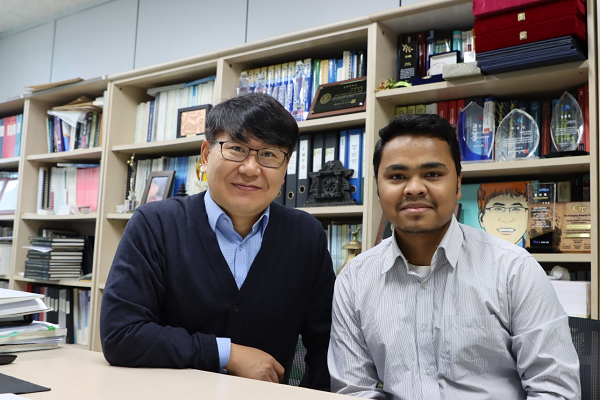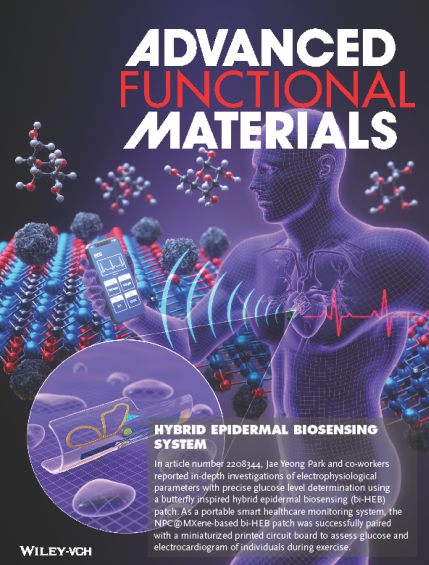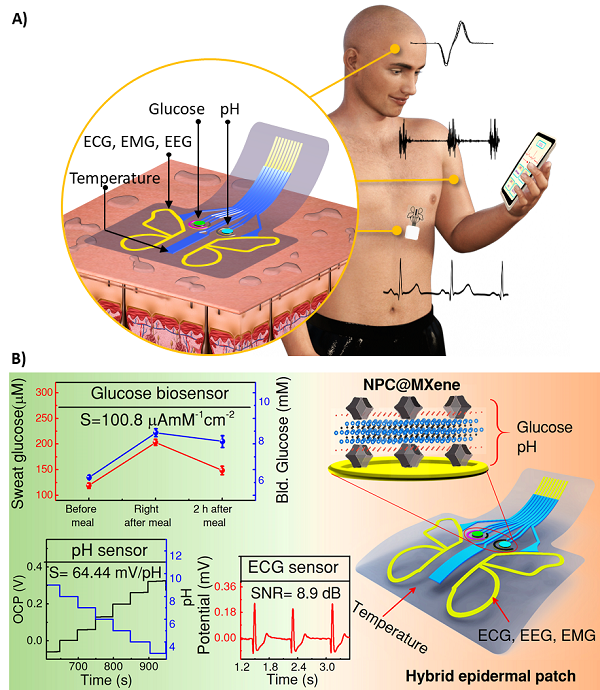Development of a Butterfly-shaped Blood Glucose and Electrocardiogram Monitoring Skin Patch
- admin
- 2023-02-23
- 643
Development of a Butterfly-shaped Blood Glucose and Electrocardiogram Monitoring Skin Patch
- Development of a Butterfly-shaped Skin Patch Sensor Capable of Real-time Monitoring of Blood Sugar and Electrocardiogram -
- Expected to Be Widely Used for Remote Management and Treatment of Chronic Diseases and Metabolic Syndrome -
- Published in a Renowned International Journal, Wiley Advanced Functional Materials Cover Thesis (Frontispiece, if: 19.92) -
Professor Park Jae-young's research team at Kwangwoon University (Department of Electronic Engineering) succeeded in developing a high-performance electrochemical-physical hybrid skin patch sensor based on nanoporous carbon-mexene (NPC@MXene) nanocomposite material for application to wearable smart medical and healthcare systems.

<Prof. Park Jae-young (left) and Dr. Abu (right)>
?
Meanwhile, this research was carried out with the support of the Ministry of Trade, Industry and Energy's Industrial Technology Innovation Project (RS-2022-00154983, development of a self-contained power sensor platform for low-power sensors and operation) and Kwangwoon University's excellent researcher support project. The research results were published in the cover paper of Advanced Functional Materials (IF:19.92) published by WILEY, the world's leading functional materials and device journal.

<Thesis cover image of hybrid skin patch sensor developed by the research team>
?

<Structure and performance of a butterfly-shaped hybrid skin patch sensor for wearable smart medical and healthcare applications>
?
(https://onlinelibrary.wiley.com/doi/full/10.1002/adfm.202208344)